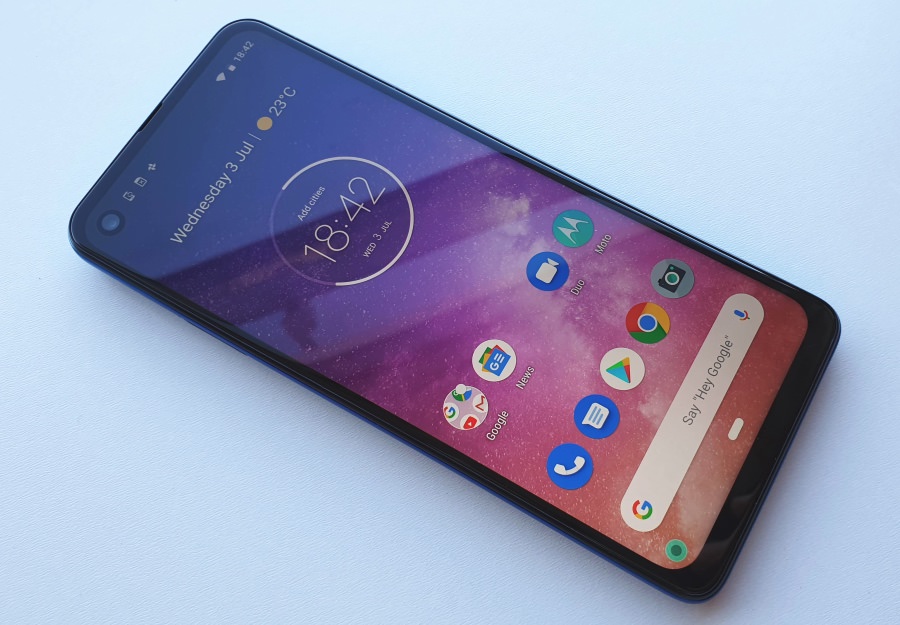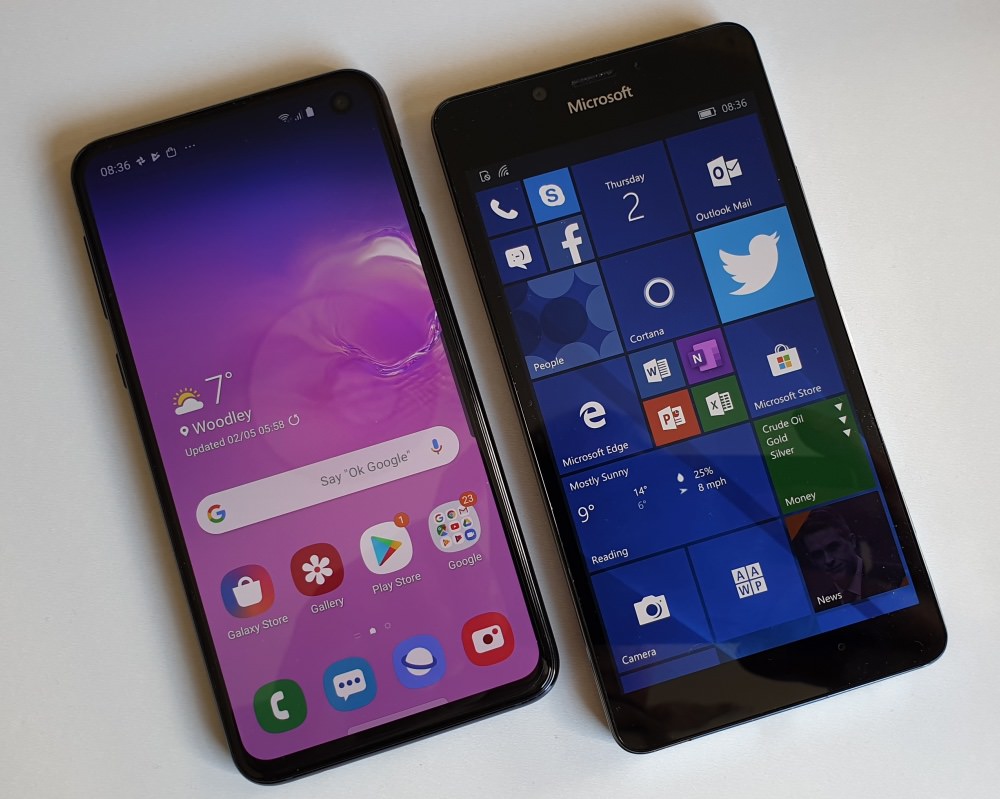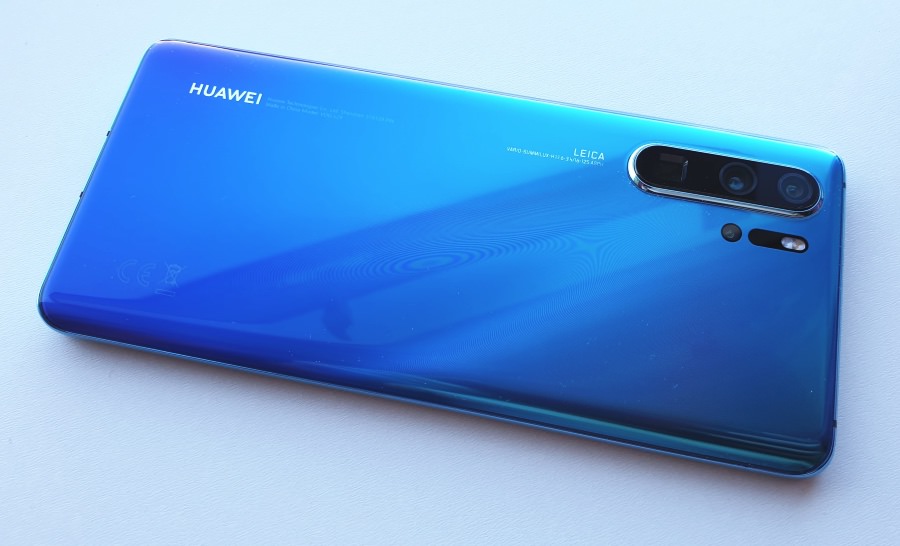It's always good to plan ahead. I should also say that I'm a in privileged position in that I own (or have been loaned) quite a number of smartphones across all OS over the last few years, as part of my reviewing jobs - but this does put me in a good place to assess what's good and bad in terms of recommending a replacement for, say, a classic and much-loved Lumia.
It's not just a question of degree, either, i.e. whether getting something expensive running Android will be faster or larger or have better battery life - there are genuine step change aspects which mean that one might be forced to another platform whether one likes it or not:
- Biometric support for logins. Good examples of this are being able to log into banking applications with one tap of a fingerprint on a sensor, or being able to tap-to-pay at a terminal in a shop. Yes, Lumias have iris recognition and yes, the IDOL 4 Pro has a fingerprint sensor, but in both cases there's simply not the same degree of integration with applications and services, and by a wide margin.
- Specific applications that can't be accessed via a browser. Snapchat comes to mind, but I'll bet there are many others, for more serious uses. When you need a particular application (or, hey, a game) and it simply doesn't exist in any form under Windows 10 Mobile then your hand is forced.
At which point, the question becomes, what to move to? A cynic might say 'Almost anything else', but I argue here that anyone steeped in Lumias, in particular, will have certain expectations of a replacement device:
- Excellent camera, not too much artificial enhancement
- High amplitude stereo microphones, for recording music, for example
- High contrast screen that works well in daylight
- Qi wireless charging
- microSD expansion, for keeping hundreds of GB of media on hand and instantly swappable
- 3.5mm audio jack, for plugging in headphones and auxiliary systems (cars/hi-fi, etc.)
- a proper 'back' control, letting you step back in an app and its interface
- plugging it into (e.g.) a Windows computer should let you see all the phone's files and folders are allow two way transfer of files, documents, media, and so on. All Windows phones do this as a matter of course, most Android phones do too (with a permissions dialog to accept in the UI)
Not all of these are givens, amazingly, in 2019's phone landscape. I'm going to rule out iPhones immediately, since:
- they've never been expandable
- they haven't had an audio jack for years
- they don't have a reliable back control or gesture that works in all apps and panes
- the way Apple hides the file system completely is anathema to someone brought up on the idea that smartphones are pocket computers and should be able to be treated as such in terms of files and folders
- in similar vein, plugging an iPhone into a Windows computer doesn't get you very far. Photos integration is primeval and iTunes and iCloud for Windows are tacky at best.
iPhone fans reading this (why?) will be outraged, of course - Rafe uses an iPhone with his primary SIM these days, but that's more to do with his work than preference, I suspect. My arguments for Android over iOS here are valid.
So Android is the way to go in terms of moving on with smartphones beyond the comfortable but increasingly restricted world of Windows Phone and Windows 10 Mobile, not least because it's utterly trivial to change the 'launcher', your primary interface with the phone, right down to using the first party 'Microsoft Launcher' and effectively getting quite a bit of the Microsoft feel and the Microsoft services. (See also, from 2017, my detailed look at using Microsoft applications and services on Android.)
But which phones should you look out for? Which ones satisfy most of the expectations above and will be the best fit for you?
I'll try to pick devices at different budget points and I'll even include some older alternatives that can now be picked up at bargain prices second hand or via clearance channels, though you've held off buying a replacement phone this long that you'll probably have built up some savings or at least the momentum of trying to come in at or near the flagship level. Anyway, options aplenty below!
Note that I haven't recommended any of the new breed of cheap Chinese phones (Xiaomi, Oppo, etc.) as, while they're often cracking value for money, the position in terms of support and updates isn't up to what a Lumia owner might require. We've been used to monthly OS updates for even three or four year old phones, so let's stick to the Android big boys here, in the justified hope of decent support and thus longevity.
In no particular order (hey, therese are just options, in my opinion, for someone moving from a Lumia 1020, 930, 1520 or 950 XL - for example), look for:
Motorola One Vision £269
(or G7 Plus for same price if you'd rather have stereo speakers and a more conventional 2:1 screen)
Brand new, released in the last month, the star feature here is (in theory) imaging, which will appeal to Lumia fans. This has the popular 2019 Sony IMX 586 48MP 1/2" sensor and here with OIS and a f/1.7 aperture, making it in many ways a modern equivalent to the old Lumia 1020. Here's my shootout with the Lumia 950 XL and some other likely contenders for this budget segment. Summary? The results don't match the specifications yet, so it's another case of waiting for updates to improve image processing. Still, the potential's there. A 21:9 'cinematic' display is top notch under most light conditions, though its use of IPS LCD rather than AMOLED (forced by the price point) does mean slightly poorer contrast overall.
In terms of the requirements above, the main 'miss' is that there's no Qi charging. But there's Power Delivery 3A charging, i.e. 15W, so it's up with the Lumias in terms of how fast it can be replenished.


Samsung Galaxy S10e £669
(or S9+ second hand for £400)
This year's Galaxy S flagships were marred a little by the use of in-screen fingerprint sensors, which are still unreliable in my testing. (The tech is getting better but until it recognises a fingerprint 99 times out of 100 then it's not 'good enough' in my book). Happily, the cheapest of the S10 phones retained a traditional capacitive fingerprint scanner, integrating it into the power button and this works superbly. The 5.8" screen sounds large, but it's 18:9, so the phone is actually very pocketable. There's no telephoto camera on the 'e', but the camera's still pretty darned good.
In terms of the requirements, the Galaxy S series meets them all, of course. If you're OK with Samsung's UI tweaks and occasional service nudges, then I still maintain that the S series flagships are still the best fit for ex-Symbian, ex-Windows phone users.

Galaxy S10e together with a Lumia 950, for size comparison...

Pixel 3a XL £469
(or Pixel 3 XL second hand for same amount)
Google's new budget range of Pixels is immediately appealing for two reasons (other than the halved prices!) - the same excellent camera system as the flagships (see my Lumia 950 head to head), plus the inclusion of a 3.5mm audio jack, something you lose by paying more... Build quality is excellent, though all in plastic, and there's the usual huge benefit of Google's guaranteed three years of updates, including at least two major new Android OS versions.
From the requirements list, the main misses are Qi charging (perhaps price-driven) and lack of card expansion. But then Pixels (like iPhones) have always preferred to just have integrated storage, for simplicity.
![]()
Huawei P30 Pro £899
I've written a lot about the P30 Pro here on AAWP, most recently here, not least because it's the modern equivalent to the Lumia 1020 in terms of imaging ambitions. 5x stabilised telephoto, 40MP main camera, plus wide-angle. It's also terrifically fast and capable, albeit with Huawei's EMUI skin over Android, which doesn't seem to harm the experience too much these days.
You do miss some of my requirements though, principally microSD expansion (this uses a Huawei proprietary NM card) and a 3.5mm jack. Oh well. Maybe the camera system makes up for these quirks?


LG V40 £500-ish
(or any of the G or V series flagships from 2017/2018, they haven't changed much, and now go down to £200 second hand)
You know what you're getting with LG phones. An Android skin which is heavy-ish and with loads of duplicate applications, plus an uncertain expectation of updates (at eats, compared to the others in this list). Yet I'd still say they're worth a shot because of the specifications, i.e. the gadgets you get. From triple cameras to card expansion to 3.5mm audio with Quad-DAC and stellar output, to a 'BoomSound' speaker to great screens and Qi charging with big batteries, the LG V and G series have it all. And, including the second hand market, you can go down as far as the LG G5 and still get all - or most - of this. In fact that G5 also has a replaceable battery, a novelty in the modern world.

(Yes, I know there's a V50 now, but that's 5G and super-expensive and hard to get)
_____________________________
PS. Having mentioned 'second hand' several times, you may wonder where's the best place to look/buy? eBay is obvious but also full of pitfalls, with scammers and locked/blocked phones not uncommon. In terms of curated sellers, sign up to MeWe (a replacement for Google+, effectively) and then into the 'PSC Classifieds' group (when challenged for admittance, quote my name and the URL of this article as your way in). Then there are second hand shops which offer guarantees, such as CeX in the UK.
PPS. If desperately trying to keep a familiar form factor, then look for the Blackberry DTEK 60 - it's essentially the same hardware as the Alcatel IDOL 4 Pro, just customised a little for the Blackberry branding. So you get the thin and premium form factor, the loud JBL-tuned stereo speakers, and so on. In fact, hey, an existing IDOL 4 Pro case will fit just fine so you don't even have to go out and buy a new case! On the downside, the OS isn't the very latest Android variant, but it was kept up to date in terms of security by Blackberry to late in 2018. As of 2019, it's abandoned, but if you're an IDOL 4 Pro owner who simply wants an Android version of the same great hardware then look no further. At it'll be cheap as chips to buy nowadays, probably sub-£200.
